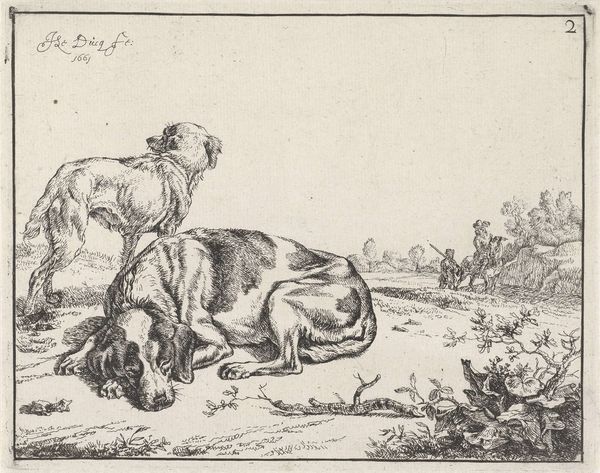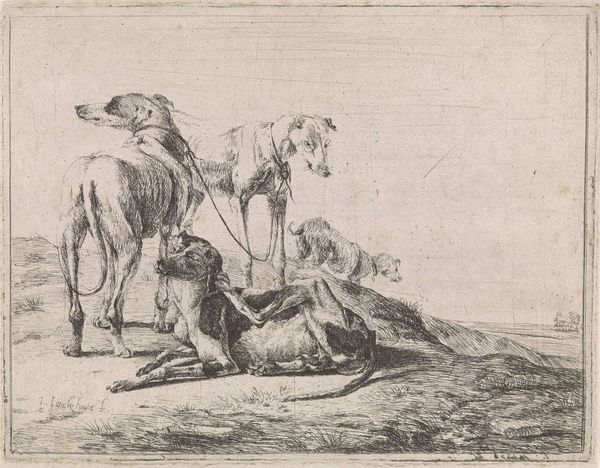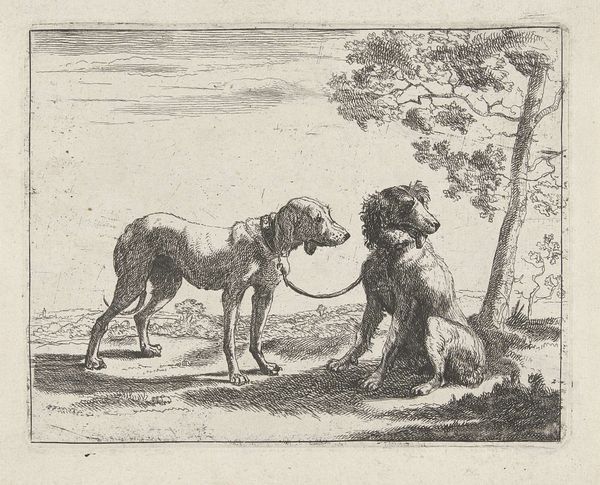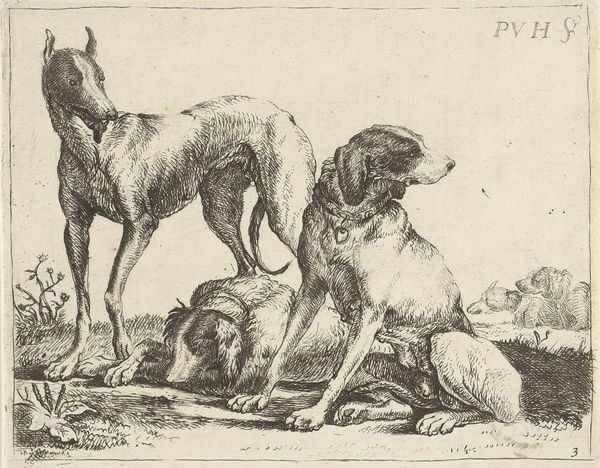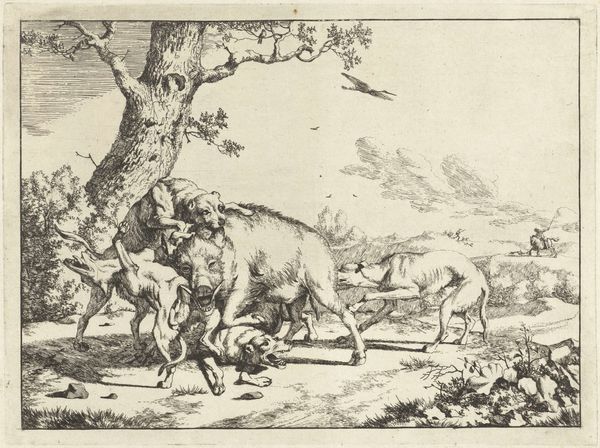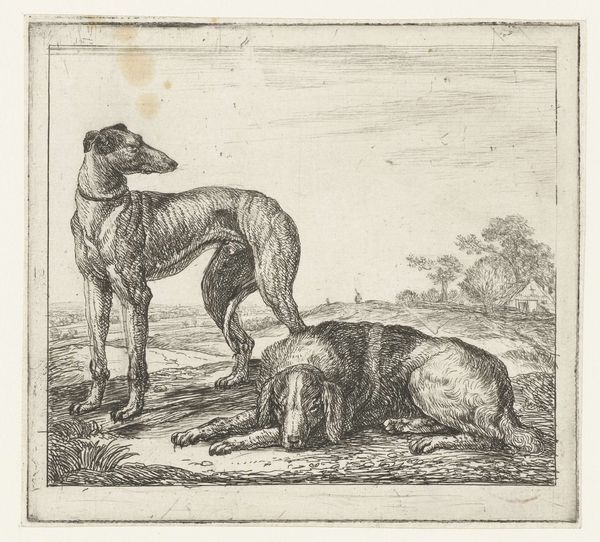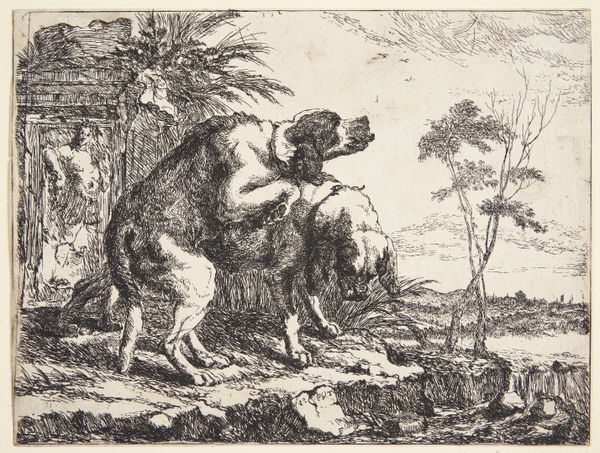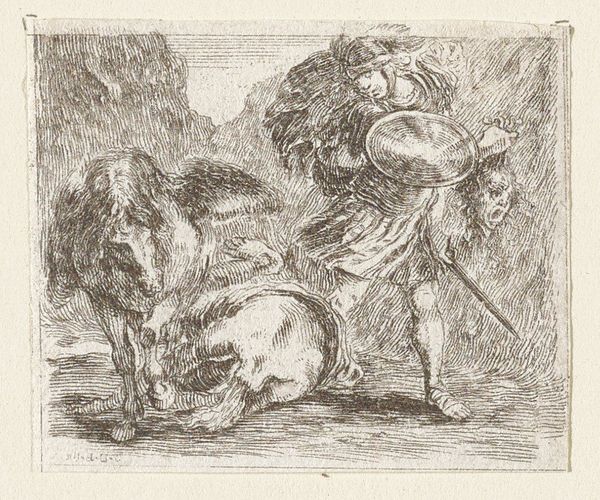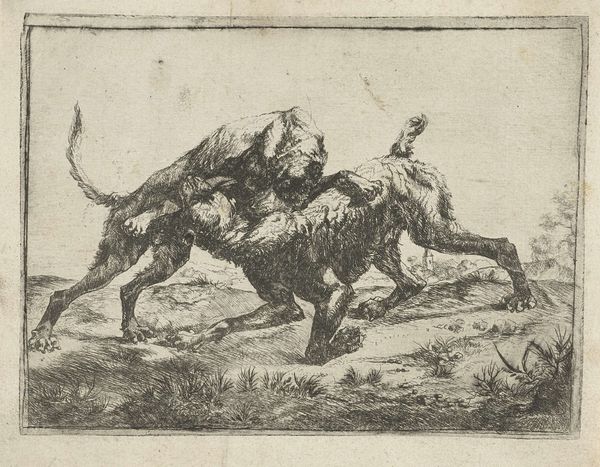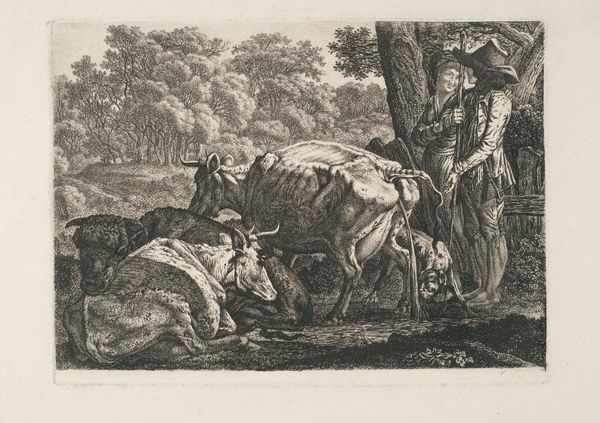
drawing, etching
#
drawing
#
animal
#
etching
#
dog
#
landscape
#
genre-painting
#
realism
Dimensions: height 150 mm, width 186 mm
Copyright: Rijks Museum: Open Domain
This print, "Two Dogs and a Hunter", was made in the 17th century by Johan le Ducq using etching. The texture, weight, and color are crucial to understanding the technique of etching. Think of it as controlled corrosion. The artist coats a metal plate with a waxy, acid-resistant ground. Then, using a needle, they draw an image, exposing the metal. When dipped in acid, the exposed lines are eaten away, creating grooves. These grooves then hold ink, which is transferred to paper under immense pressure. The lines, close and dense, suggest the rough fur of the dogs, the worn clothing of the hunter, and the unforgiving landscape. Look closely at the hunter; his posture suggests exhaustion, his dependence on the animals as a form of labor. Understanding the material process allows us to look beyond the pastoral image and consider the labor and social context embedded within it.
Comments
No comments
Be the first to comment and join the conversation on the ultimate creative platform.
